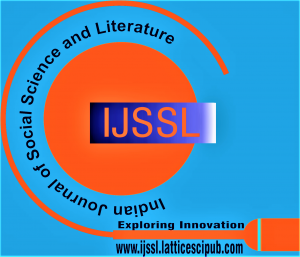![]()
Livelihood in Selected Coastal Areas in Ilocos Norte and Its Socio-Economic Dimension
Susan G. Aquino1, Sherlyn B. Nicolas2
1Dr. Susan G. Aquino, Department of Social Science Research, Mariano Marcos State University-Research Directorate, Science Research Laboratory, Batac, Ilocos Norte, Philippines.
2Dr. Sherlyn B. Nicolas, Department of Social Science Research, Mariano Marcos State University-Research Directorate, Science Research Laboratory, Batac, Ilocos Norte, Philippines.
Manuscript received on 15 February 2024 | Revised Manuscript received on 04 March 2024 | Manuscript Accepted on 15 March 2024 | Manuscript published on 30 March 2024 | PP: 10-21 | Volume-3 Issue-3, March 2024 | Retrieval Number: 100.1/ijssl.C111503030324 | DOI: 10.54105/ijssl.C1115.03030324
Open Access | Ethics and Policies | Cite | Zenodo | OJS | Indexing and Abstracting
© The Authors. Published by Lattice Science Publication (LSP). This is an open-access article under the CC-BY-NC-ND license (http://creativecommons.org/licenses/by-nc-nd/4.0/)
Abstract: Livelihoods are diverse and made up of multiple activities depending on the available assets to earn a living. Aside from fishing as the only major source of income for coastal dwellers, are there other means of livelihood that a coastal area can offer? This document will help us understand the complexity of coastal livelihoods and an idea on the alternative livelihoods within the coastal area. Result will be used to document and measure the socio-economic benefits and costs of different livelihood, and will also set limits and policies that are really adaptable in protecting our coastal resources. Purposive sampling was done with the assistance of the Department of Agriculture-Municipal Agriculture and Fishery Council (DA-MAFC) who identified the respondents. Descriptive statistics, frequency counts, percentages and means were used to treat data collected. Results show that there exist some variations of livelihood along coastal areas like seaweed gathering, salt-making, stone and shell picking and crafting. There are also alternative source that would complement these traditional coastal means of livelihood like boat-making/boat for hire, making of fishing materials, fire woods gathering and homestay. It is necessary to employ interventions which help to strengthen capacity building in coastal communities. Trainings to improve their craft and packing should also be applied.
Keywords: Livelihoods, Alternative Source, Coastal Resources, Capacity Building
Scope of the Article: Economics
